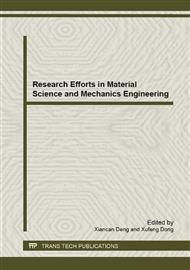p.247
p.252
p.256
p.260
p.266
p.271
p.276
p.281
p.286
Effects of Laser Shock Peening on TC11 Titanium Alloy with Different Impacts
Abstract:
The blade, made of TC11 titanium alloy, is prone to result in fatigue failure in the formidable environment in aero-engine. So a higher performance request of the material is brought forward. In this paper, laser shock peening(LSP) as a solution is applied to TC11 titanium alloy and microstructure, residual stress and microhardness with and without LSP were examined and compared via transmission electron microscope(TEM), X ray diffraction(XRD)and microhardness tester. The TEM results indicate that a great high density of dislocations are generated and evolve into the dislocation wall, sub-boundary and grain boundary. The nanocrystallites are formed and become smaller and more uniform with greater impacts. A high compressive residual stress above -540MPa is introduced with an increasing plastically affected layer with different impacts. The microhardness test result shows that LSP can obviously increase the hardness by 20 percent or so, and the affected depth increases with the impact from 600μm to 1200μm.
Info:
Periodical:
Pages:
266-270
Citation:
Online since:
April 2013
Authors:
Price:
Сopyright:
© 2013 Trans Tech Publications Ltd. All Rights Reserved
Share:
Citation:


